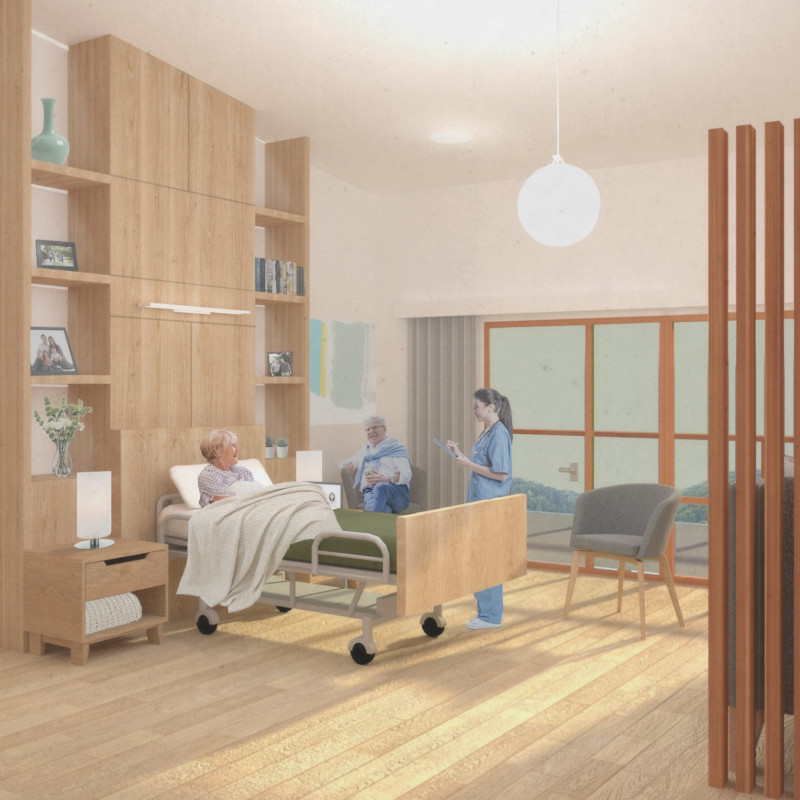5 key facts about this project
The Centre for Human & Environmental Health is located in Asbestos, Québec, and functions as both a hospice and outpatient clinic. The goal is to provide a supportive environment for those affected by asbestos-related diseases, acknowledging the community’s historical struggles. The design emphasizes a connection to the landscape, aiming to promote healing and wellness. By integrating natural elements with healthcare services, the Centre seeks to foster a sense of community and resilience among its users.
Site Integration
The architecture focuses on establishing a strong link between the facility and its natural surroundings. An outdoor elevated walkway serves as the main connection throughout the site, mimicking the veins found in local geology. This pathway rises above the ground, allowing users to engage with the tree canopy and enhancing accessibility for all. The walkway splits into different areas designed for gathering, quiet reflection, and remembrance, each encouraging active engagement with nature in different forms.
Interior Environment
At the centre of the design is a spacious atrium that runs through both levels of the building. Its purpose is to fill the interior with natural light, creating a warm and inviting atmosphere. The use of glass provides views of the outside landscape, allowing patients and visitors to connect with the calming environment. This central space is more than just a functional element; it offers a sense of openness that is important for the wellbeing of those using the Centre.
Community Focus
The Centre stands as a significant resource for the local community, meeting the health care needs of those impacted by asbestos. It combines palliative and outpatient care, making it a vital space for individuals and families. The design encourages social interaction, fostering relationships between patients and healthcare providers. Areas dedicated to contemplation and memorial gardens reflect the importance of remembering those affected by asbestos-related illnesses.
The design of the Centre respects the local landscape, adapting to the contours of the site. This careful consideration of light and space creates a supportive environment focused on health and community. The Centre not only addresses medical needs but also emphasizes the importance of nature in the healing process.





















































